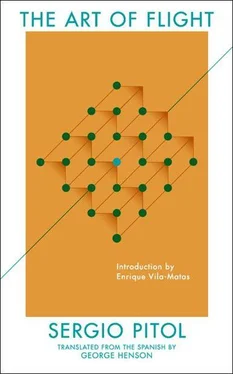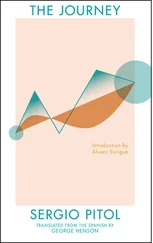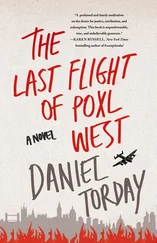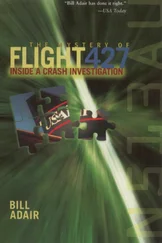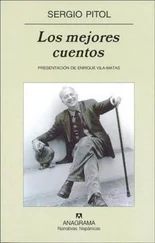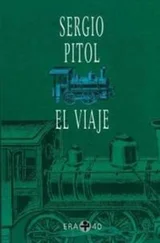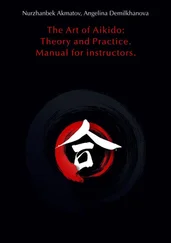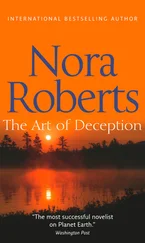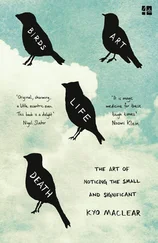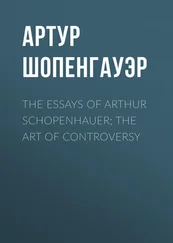Sergio Pitol - The Art of Flight
Здесь есть возможность читать онлайн «Sergio Pitol - The Art of Flight» весь текст электронной книги совершенно бесплатно (целиком полную версию без сокращений). В некоторых случаях можно слушать аудио, скачать через торрент в формате fb2 и присутствует краткое содержание. Год выпуска: 2015, Издательство: Deep Vellum, Жанр: Современная проза, на английском языке. Описание произведения, (предисловие) а так же отзывы посетителей доступны на портале библиотеки ЛибКат.
- Название:The Art of Flight
- Автор:
- Издательство:Deep Vellum
- Жанр:
- Год:2015
- ISBN:нет данных
- Рейтинг книги:5 / 5. Голосов: 1
-
Избранное:Добавить в избранное
- Отзывы:
-
Ваша оценка:
- 100
- 1
- 2
- 3
- 4
- 5
The Art of Flight: краткое содержание, описание и аннотация
Предлагаем к чтению аннотацию, описание, краткое содержание или предисловие (зависит от того, что написал сам автор книги «The Art of Flight»). Если вы не нашли необходимую информацию о книге — напишите в комментариях, мы постараемся отыскать её.
The first work in Pitol's "Trilogy of Memory," The Art of Flight imaginatively blends the genres of fiction and memoir in a Borgesian swirl of contemplation and mystery, expanding our understanding and appreciation of what literature can be and what it can do.
The Art of Flight — читать онлайн бесплатно полную книгу (весь текст) целиком
Ниже представлен текст книги, разбитый по страницам. Система сохранения места последней прочитанной страницы, позволяет с удобством читать онлайн бесплатно книгу «The Art of Flight», без необходимости каждый раз заново искать на чём Вы остановились. Поставьте закладку, и сможете в любой момент перейти на страницу, на которой закончили чтение.
Интервал:
Закладка:
And from instinct, which is a mystery, I would like to shift to the subject of tolerance, which is an act of will. There is no human virtue more admirable. It implies recognition of others: another way of knowing oneself. An extraordinary virtue, says E.M. Forster, although hardly exciting. There are no hymns to tolerance, as there are, in abundance, to love. It lacks poems and sculptures that extol it. It is a virtue that requires a constant effort and vigilance. It has no popular prestige. If one says of a man that he is tolerant, most people instantly believe that his wife has cheated on him, and the rest make him out to be a fool. One would have to return to the eighteenth century, to Voltaire, to Diderot, to the encyclopédistes , to find the true meaning of the word. In our century, Bakhtin is one of its paladins: his notion of dialogism allows for the possibility of responding to different and opposite meanings equally. “We only harm others when we’re incapable of imagining them,” writes Carlos Fuentes. “Political democracy and civilized coexistence between men demands tolerance and the acceptance of values and ideas different than our own,” says Octavio Paz.
Norberto Bobbio offers a definition of the “civilized” man that embodies the concept of tolerance as daily action, a working moral exercise: The civilized man “lets others be themselves irrespective of whether these individuals may be arrogant, haughty, or domineering. They do not engage with others intending to compete, harass, and ultimately prevail. They refrain from exercising the spirit of contest, competition, or rivalry, and therefore also of winning. In life’s struggle [civilized men] are perpetual losers. […] This is because in this kind of world there are no contests for primacy, no struggles for power, and no competitions for wealth. In short, here the very conditions that enable the division of individuals into winners and losers do not exist.” 1There is something enormous in those words. When I observe the deterioration of Mexican life, I think that only an act of reflection, of critique, and of tolerance could provide an exit from the situation. But conceiving of tolerance as it is imagined in the Bobbio’s text implies a titanic effort. I begin to think about the hubris, arrogance, and corruption of some acquaintances, and I become angry, I begin to list their attitudes that most irritate me, I discover the magnitude of contempt they inspire in me, and eventually I must recognize how far I am from being a civilized man.
In the second entry of Lezama Lima’s diaries, dated October 24, 1939, the Cuban writer writes of the relationship between Voltaire and Frederick II. In the beginning, the rapport between the monarch and the philosopher seemed perfect: “Both constantly lose all sense of measure in their praise.” But a single criticism by Voltaire regarding the spelling mistakes that spoil Louis XIV’s prose is enough to poison the relationship. A king is a king and therefore his greatness cannot be dishonored by a solecism or a spelling mistake; a philosopher, no matter how genius, is only a philosopher and should know his place. Caesar est supra grammaticam , that must never be forgotten. The age-old connection between writer and prince has been undermined by misunderstanding; it is a dangerous friendship. A novelist must learn to carry on a dialogue with others, but especially with himself, he must learn to scrutinize and listen to himself; this will help him know who he is. If he fails, instead of a novel, he will build a verbal artifact that attempts to simulate a narrative form, but whose breathing will be wrong. It will, perhaps, pick up something in the atmosphere. The author knows that he will please either Caesar or the masses, it makes no difference; he has written it for one of those two deities. A few years later, it will end up on the scrapheap. Literature is worse than la belle dame sans merci , that woman beloved and feared by the symbolists. When they play tricks on her, when she senses that she’s being used for spurious reasons, her revenge can be ferocious.
To begin by invoking the annals of Venice and to end bogged down in a literature of lies is a vulgarity. This fact allows me to realize how far I am from the civilized man that Bobbio envisions. Rather than yield to that irritation, I would like to comment on the attitude of two writers who have been decisive as models for my life of retirement: Luis Cernuda and Julien Gracq. It is well known that temperament is destiny, and in temperament I feel that I belong to the same family as those writers. From the outside, and out of slapdashness, one might think that it is a question of authors determined to read life instead of live it. The truth is a little more complex and at the same time much simpler.
One might think that renouncing a large portion of the world’s customs is a way to make arrogance, and occasionally pride, pass for humility. This is not the case. For me it’s a matter of intense relaxation, a pure form of hedonism. Walking through my garden; seeing all my books collected at last, knowing that I have reached the desert island with more options than the ten titles demanded by polls; being far from everything — without refusing to observe the world — scrutinizing it, reading it, trying to decipher its signs, sensing its movements, is overall a pleasure. This does not exclude traveling, dreaming of walking once again the streets of Lisbon, Prague, Marienbad, Venice…
Venice has been a frequent setting in my literature. It is an imagined Venice like Hofmannsthal’s, an ideal Venice, which produces in me the certainty of man’s biological unity with everything that surrounds him and his mythical fusion with the past.
I once wrote:
“All times deep down are a single time. Venice comprises and is comprised of all cities, and the young tourist who, Baedeker in hand and eyes half-closed, stops to contemplate a whimsical façade on the Via degli Schiavoni, the collar of his raincoat raised to protect his weak bronchial tubes from the prevailing dampness, is the same young Levantine with almond eyes and curly hair who contemplates with amazement the riches of the market that runs along the recently erected Rialto Bridge, and also the slave with a coarse mop of dirty-green hair captured in a Kashubian village on the Baltic coast in order to dig the first palafittes of what would later become the most colorful, the most eccentric, the most spectacular of all cities. Each one of us is all men. I have been, the protagonist seems to proclaim, Othello and also Iago and also Desdemona’s lost handkerchief! I am my grandfather and those who will be my grandchildren! I am the vast stone that lays the foundation for these wonders, and I am also its cupolas and estipites! I am a lad and a horse and a piece of bronze that represents a horse! Everything is all things! And only Venice, with its absolute individuality, could reveal that secret.”
Xalapa, February 1996

1 Translated by Teresa Chataway. Throughout the text, Pitol quotes from a variety of literary texts written in Spanish and in other languages. Because he does not cite the quotations, it is impossible to know the source of the translated quotations. For consistency, where possible, I have opted to use published English translations of all quotations. A full bibliography of these translations and their sources is included in the Appendix. Unless otherwise noted by a footnote, all translations of these quotations are mine. —Trans.
WITH MONSIVÁIS THE YOUNGER
ONE DAY IN 1957
I’m waiting for Monsiváis in the Kilos on Avenida Juárez, opposite the El Caballito statue. We agreed to meet at two, have lunch, and go over the final pages of the text I was to publish in the Cuadernos del Unicornio (The Unicorn’s Notebooks). I don’t know how many times I’ve reread the proofs, but I’ll feel more secure if he takes a look at them. Carlos was the first person to read the two stories that will make up the notebook; the first, “Victorio Ferri Tells a Tale,” is dedicated to him. I see him almost daily, even if just in passing. We met three years ago — yes, in 1954—during the days preceding the “Glorious Victory.” At that time we were participating in the University Committee for Solidarity with Guatemala; we collected protest signatures, distributed fliers, attended a rally together that began in the Plaza de Santo Domingo. We saw Frida Kahlo there, surrounded by Diego Rivera, Carlos Pellicer, Juan O’Gorman, and some other “greats.” She was already living entirely against the grain; it was her last public appearance: she died shortly thereafter. From then on I began to see Carlos regularly: in the café at the Faculty of Philosophy and Letters; at a cineclub ; in the editorial office of Estaciones ; or in the home of mutual friends. More than anywhere else, I ran into him at bookstores.
Читать дальшеИнтервал:
Закладка:
Похожие книги на «The Art of Flight»
Представляем Вашему вниманию похожие книги на «The Art of Flight» списком для выбора. Мы отобрали схожую по названию и смыслу литературу в надежде предоставить читателям больше вариантов отыскать новые, интересные, ещё непрочитанные произведения.
Обсуждение, отзывы о книге «The Art of Flight» и просто собственные мнения читателей. Оставьте ваши комментарии, напишите, что Вы думаете о произведении, его смысле или главных героях. Укажите что конкретно понравилось, а что нет, и почему Вы так считаете.
